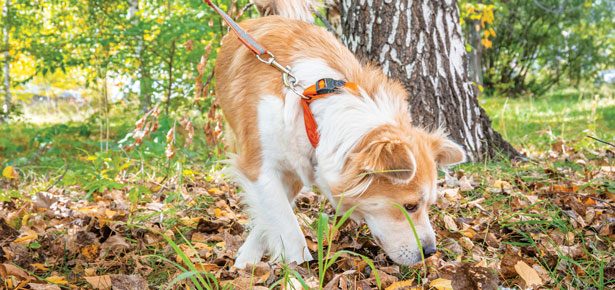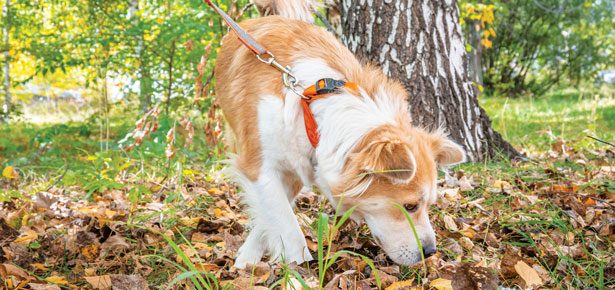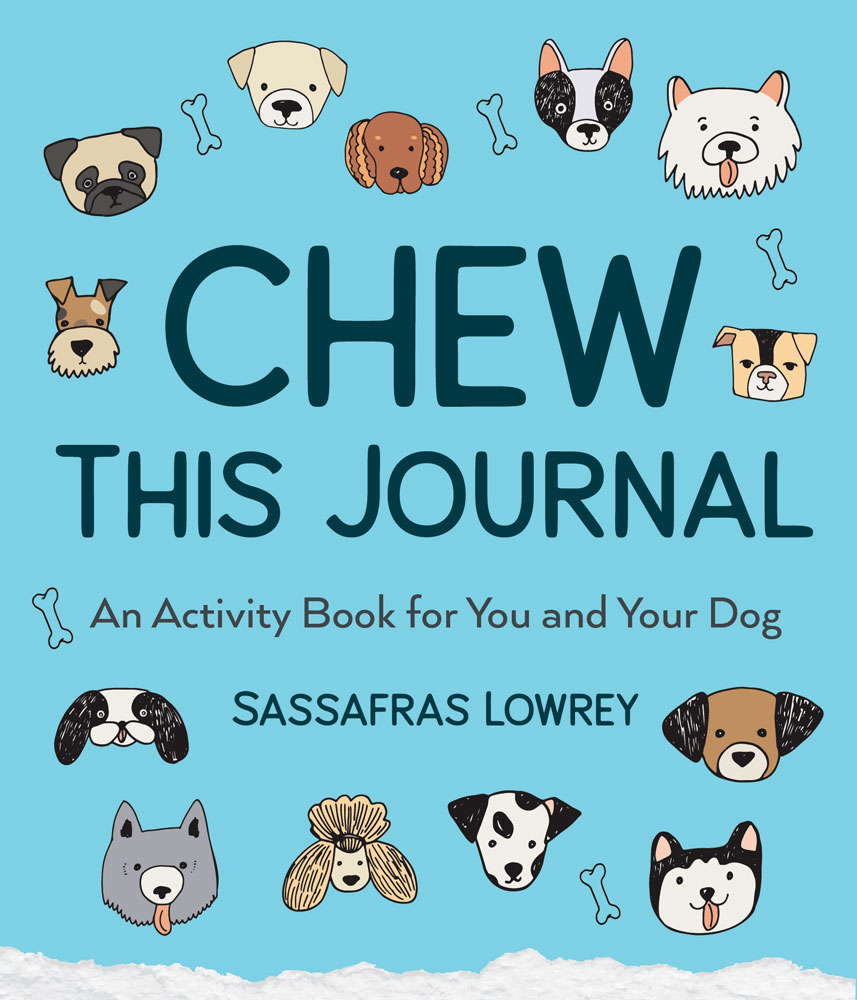

Sniff Walk
Walking should be fun for you and your dog, it’s an opportunity to explore the world together. Walks are, of course, great physical exercise for dogs (and us) but they also have the opportunity to be enriching. Unfortunately, in our busy world with cell phones and work schedules and errands that need to be run, sometimes walking the dog becomes just another chore, and the focus becomes getting from point A to point B as quickly and efficiently as possible. Sniffing is natural to our dogs; it’s their most dominant sense and is stress relieving. Dogs have three hundred million scent receptors in their noses! As humans, we only have something like six million—dogs see the world through their nose more vibrantly than we can even imagine.
While there are some reasons you might need to keep a confined, quick speed while walking your dog (for example, if your dog is recovering from an orthopedic injury and you are working with a veterinary rehabilitation specialist), but if you are just on an average walk with your dog, it’s important to let your dog pause, slow down, and sniff. Not all of us can accommodate an entirely sniffing-focused walk for every walk we take, but if you are taking your dog out for a walk, try to make sure to give them at least some time during the walk to sniff, if you do have to hurry your dog along, don’t scold him for sniffing, redirect him back to you, treat, and praise. Having good leash manners is not at all incompatible with sniffing, and in fact, when dogs are permitted to sniff, to explore their world in a way that is most natural to them, your dog is significantly more likely to be responsive to training. Try to prioritize letting your dog have the opportunity to sniff. If you have a busy morning, try to leave for your walk a few minutes early to allow time for your dog to sniff, and make time for casual walks where you can give your dog as much time as he wants.
Spending more intentional and mindful time with our dogs is a great way to show them how important they are and to prioritize our relationship with our dog. In addition, try adding sniff-specific walks regularly. Can you manage a sniff walk once or twice a week?
What Will Your Dog Find?
Dogs have a way of finding the most interesting things, sometimes even the sorts of things that we wouldn’t notice. In this way, dogs can help us to be more aware of the world around us and more mindful and aware of the natural (and not so natural) world that surrounds us. Whether you and your dog are walking around a busy urban center or are out hiking in the wilderness, take notice of the things your dog is drawn to—it might surprise you what they find!
An abandoned shoe, the wing of a bird, a big stick, a deflated basketball, a pretty feather, a flower—there are so many interesting “treasures” to find just in your neighborhood!
What are things your dog is drawn to while out on a walk? Keep an ongoing record of the different things your dog is excited about; are there any commonalities or themes?

Doesn’t have to be. Part activity book and part bullet journal, Chew This Journal by Sassafras Lowrey provides inspiration and guidance (Bucket lists! Outings! Arts and crafts!) for dog lovers looking to enrich the lives of their pups.
Join the newsletter and never miss out on dog content again!
"*" indicates required fields
By clicking the arrow, you agree to our web Terms of Use and Privacy & Cookie Policy. Easy unsubscribe links are provided in every email.